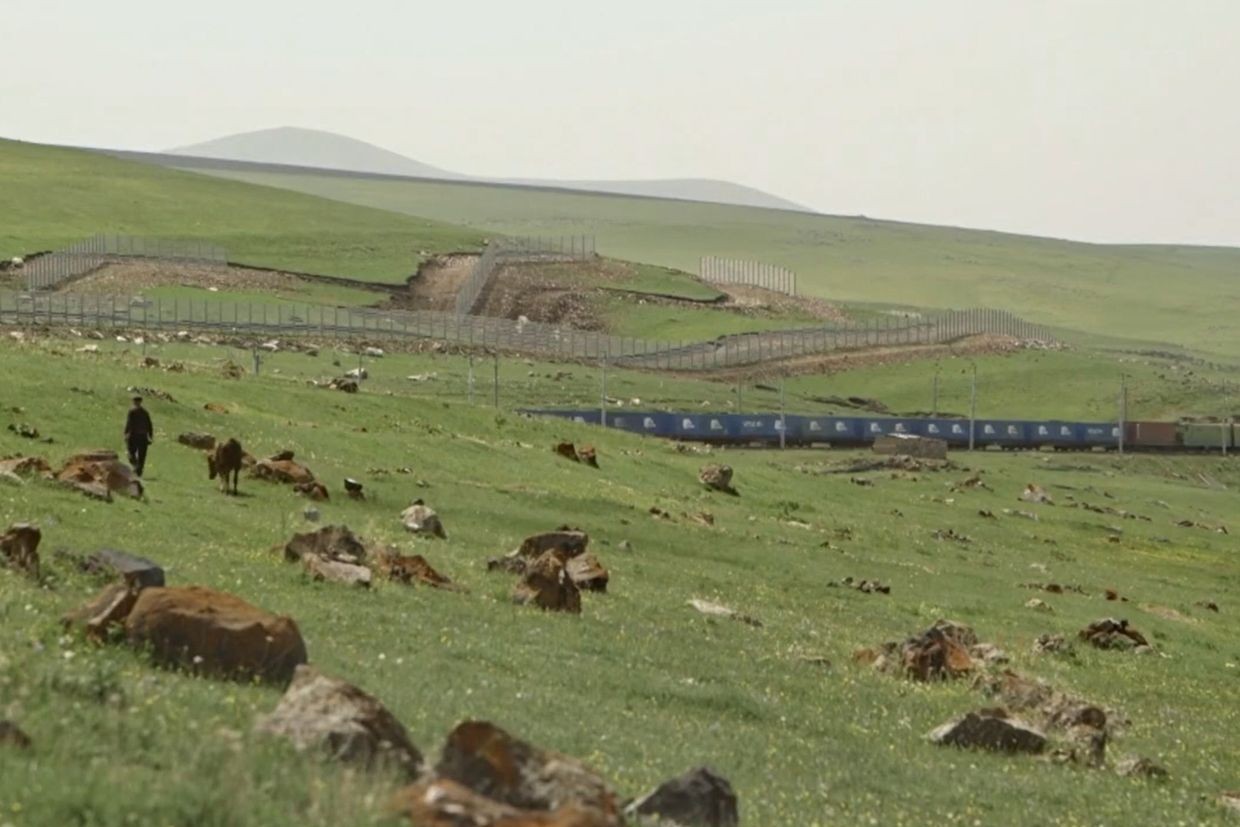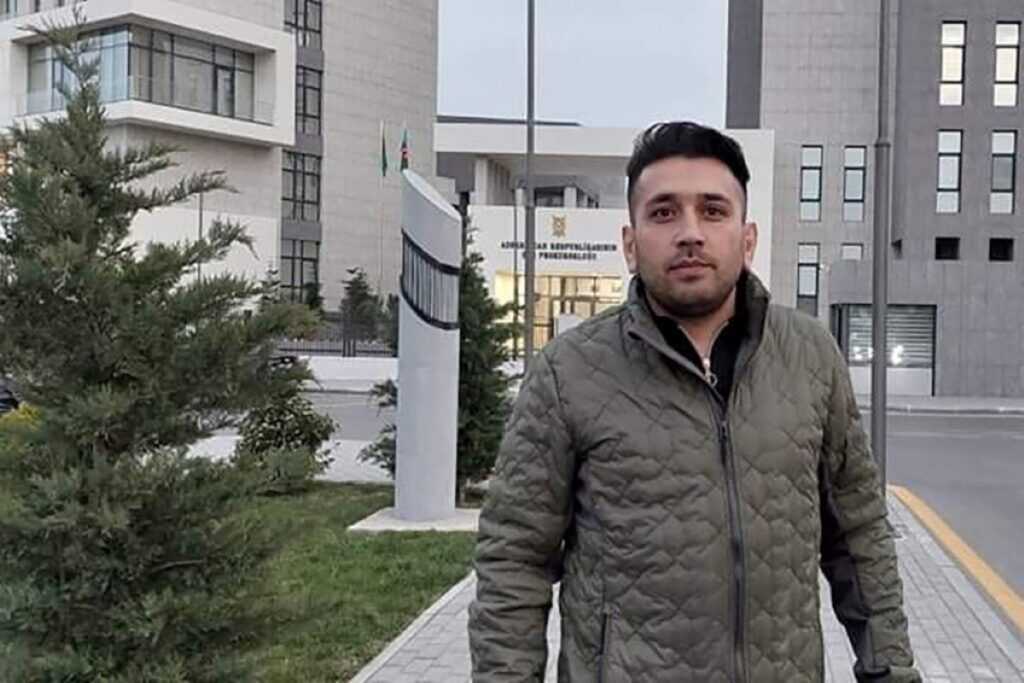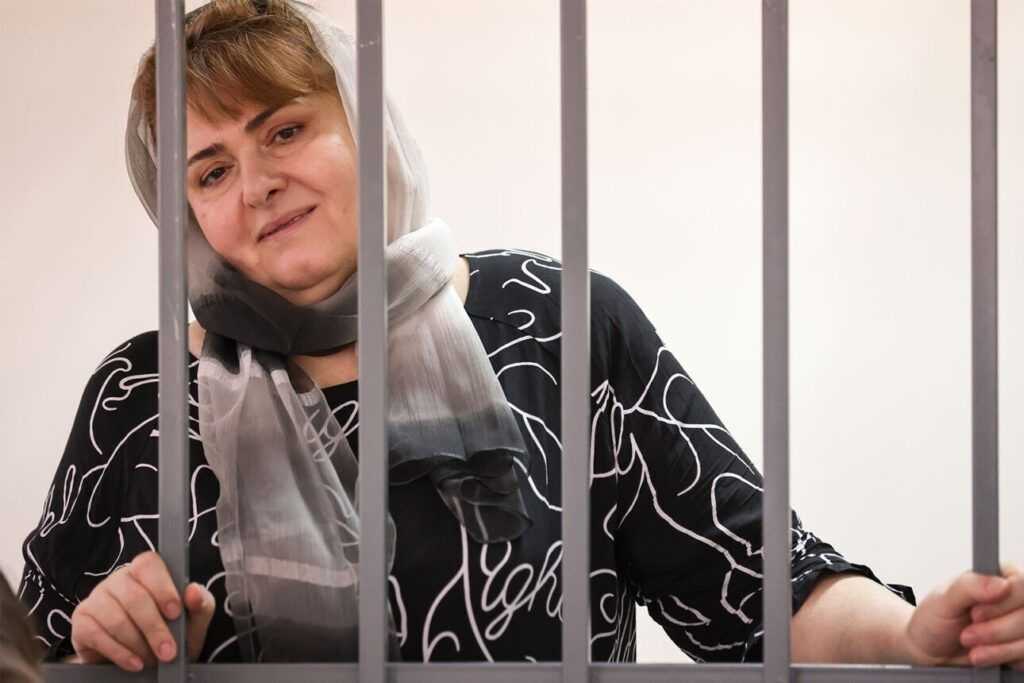
★★★★☆
This ambitious documentary uses the Baku–Tbilisi–Kars railway to delve into political schemes and cross-border solidarity in the South Caucasus.
During the Gantiadi cultural festival in Berlin, an experimental documentary about a seemingly dry subject — railroad infrastructures in the South Caucasus — was screened. Yet A State in a State (2022), a complex piece by Tekla Aslanishvili, researched in collaboration with Dr Evelina Gambino, was, in fact, anything but dry.
With the festival venue situated between Treptower park and Ostkreuz S-Bahn stations, the atmosphere of the screening was fittingly accompanied by urban trains whooshing behind us as we sat out in the cold of the open-air cinema under a magnificent starry sky.
The documentary starts with a somewhat humbler view of freight train tracks peeking out from behind apartment buildings in Tbilisi. This is the view that Aslanishvili grew up with, closely watching trains and developing a fascination about the mysterious comings and goings of the Tbilisi train depot. The film is not a personal essay, however, but an intricate weaving of voices that transport us into the backstage of those mysteries, revealing their major political repercussions.
From this departure point the documentary soon switches to the Akhalkalaki train station, built as part of the Baku–Tbilisi–Kars (BTK) railway line, the ‘New Silk Road’ meant to connect Europe and Asia. Its significance as the break-of-gauge spot, i.e. the place where railroad widths (in this case, EU and Soviet-inherited gauge sizes) between regions differ and thus need a logistical operation to dock them, cannot be understated. As one interviewee explains, the ability to serve this function means the ‘flourishing of the region. A fairytale could be built there!’ The reality, of course, is a lot more complicated.
In an interview, Aslanishvili said that in her research, she quickly understood that ‘this railway was more than just a way of transporting goods and people. It acted as a means for geopolitical sabotage and for negotiating political relations between Azerbaijan, Georgia, Armenia, and Turkey’. The BTK line was created to bypass the Gyumri station (one of the documentary highlights and the oldest railroad junction in Armenia), blocked by Turkey since the First Nagorno-Karabakh War. The project consequently leaves Armenia out in the cold, depriving it from economic opportunities.
Not only that: Akhalkalaki itself is a majority-Armenian municipality in Georgia and, since the Azerbaijani government funds the project, none of the thousands of locals who applied received any job offers. Flourishing of the region, indeed. The BTK line was built on the collapse of national relations in the South Caucasus after the fall of the Soviet Empire and continues to perpetuate it.
From the geopolitical tensions in the present, Aslanishvili travels back in time to explore political sabotage of a different kind. Briefly, the documentary delineates the role of the railway workers in anti-Tsarist resistance, as well as Georgian railway workers’ aid in the aftermath of the Spitak earthquake in Armenia in 1988. Additionally, an Armenian interviewee recalls Turkish workers letting through freight trains carrying frozen bread during the border blockade that led to national hunger in the early 1990s.
Stories past and present (Aslanishvili derails away from the South Caucasus to talk about alleged Belarusian railway worker sabotage of Russia’s invading forces) powerfully illustrate transnational worker solidarity and its ramifications.
In the documentary, this solidarity is explained by the notion that the railway is what Soviets called ‘a state within a state’, an almost parallel world not only with a sovereign infrastructure, but also its own social system. This kinship expanded beyond national borders, resulting in workers ‘ignoring the state orders’ and following their moral compass, instead, to help their neighbours. One researcher in the documentary posits that the railway forms a ‘political consciousness’ through shared actions and activities, forming a strong sense of camaraderie and organisational savviness.
Apart from the overtly political material, philosophical questions about the material value of time — since transportation infrastructure has the ability to stretch out or delay time — are briefly mentioned but largely left to tease or confuse the viewer.
The auditory quality of A State in a State is topnotch, as a minimalist soundtrack by Ani Zakareishvili and Nika Pasuri masterfully grounds the viewer in the journey through diverse perspectives and histories.
Cinematography by Aslanishvili and Nikoloz Tabukashvili is gorgeous, emphasising the vastness of the scenery as much as the mundane moments: sheep cross the road, while cows prefer the railroads.
In her work, Aslanishvili focuses on ‘the disparities between governments, people, their land, and private corporations’ — as shown in A State in a State, the lived reality of those regions is far from the grandiose political schemes imposed from above.
Film details: A State in a State (2022), directed by Tekla Aslanishvili.










